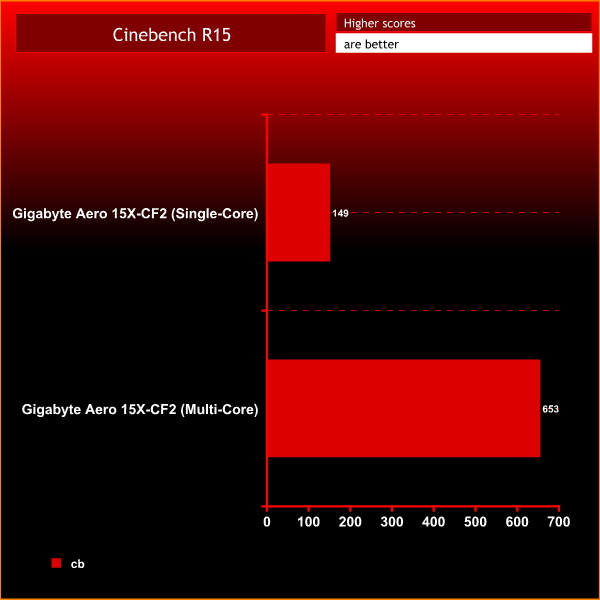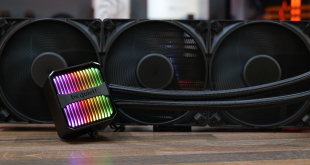CINEBENCH R15 is a cross-platform testing suite that measures hardware performance and is the de facto standard benchmarking tool for leading companies and trade journals for conducting real-world hardware performance tests. With the new Release 15, systems with up to 256 threads can be tested.
CINEBENCH is available for both Windows and OS X and is used by almost all hardware manufacturers and trade journals for comparing CPUs and graphics cards.
The Gigabyte’s Cinebench scores indicate consistent and impressive levels of processing performance.
The Aero’s multi-core result of 653cb is enough to ensure that multi-threaded applications and multi-tasking are handled with equal aplomb – only the toughest workstation tools won’t run well on this machine, and that’s hardly the Gigabyte’s target market anyway.

The laptop’s single-core result of 149cb, meanwhile, is great – even better than some recent AMD and Intel desktop processors. Good single-core performance means that general-purpose computing will run rapidly on this machine. Whether it’s media playback or web browsing, you won’t have any issues.
 KitGuru KitGuru.net – Tech News | Hardware News | Hardware Reviews | IOS | Mobile | Gaming | Graphics Cards
KitGuru KitGuru.net – Tech News | Hardware News | Hardware Reviews | IOS | Mobile | Gaming | Graphics Cards




Prefer the proper heavy gaming laptops like my MSI laptop from 2014. Don’t see the point of these thin max-q laptops at all.
That’s an interesting cpu the ‘77700HQ ‘ one to many 7’s but then again It might be new knowing Intels naming system
Being able to use it for something else than gaming. Like sending email at the beach for 8 hours straight on battery power, bringing it on vacation without breaking the back, etc.
I like those huge bricks myself, even bought a MSI GT80S with 18 inch screen.
But I can see the point in this laptop. Mobile power.
Given that this is virtually the same but with more power, how come it got a whole point less than the Aero 15? Is it because of the heat issues when stressing both the CPU and GPU simultaneously?